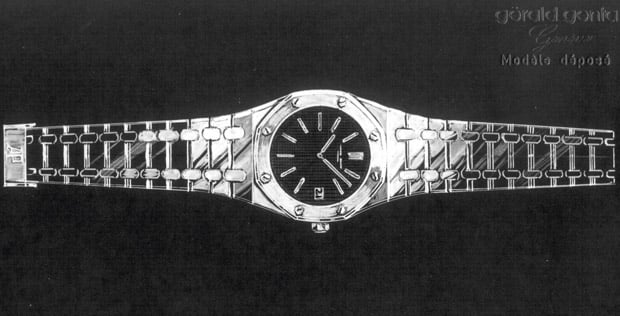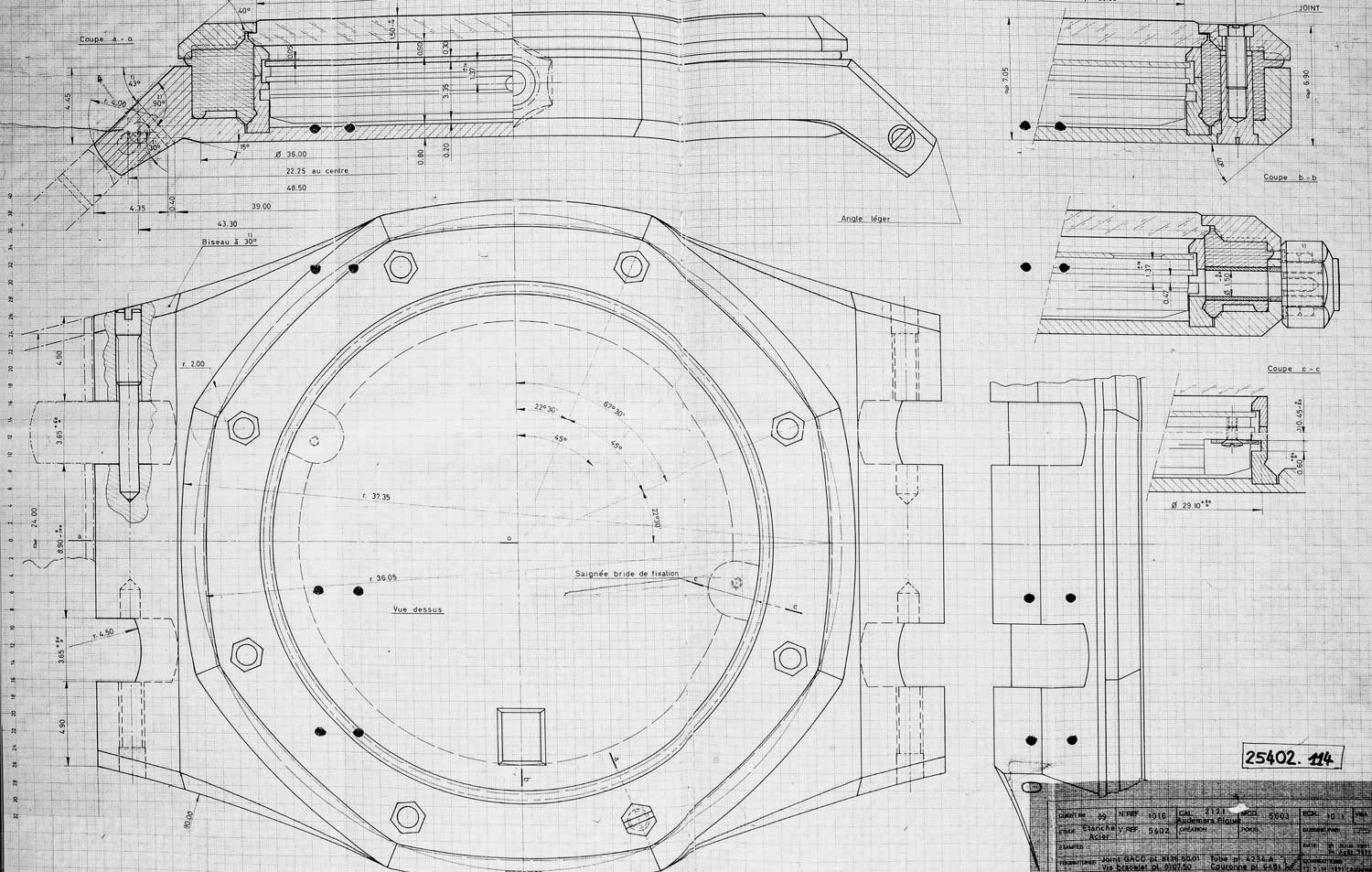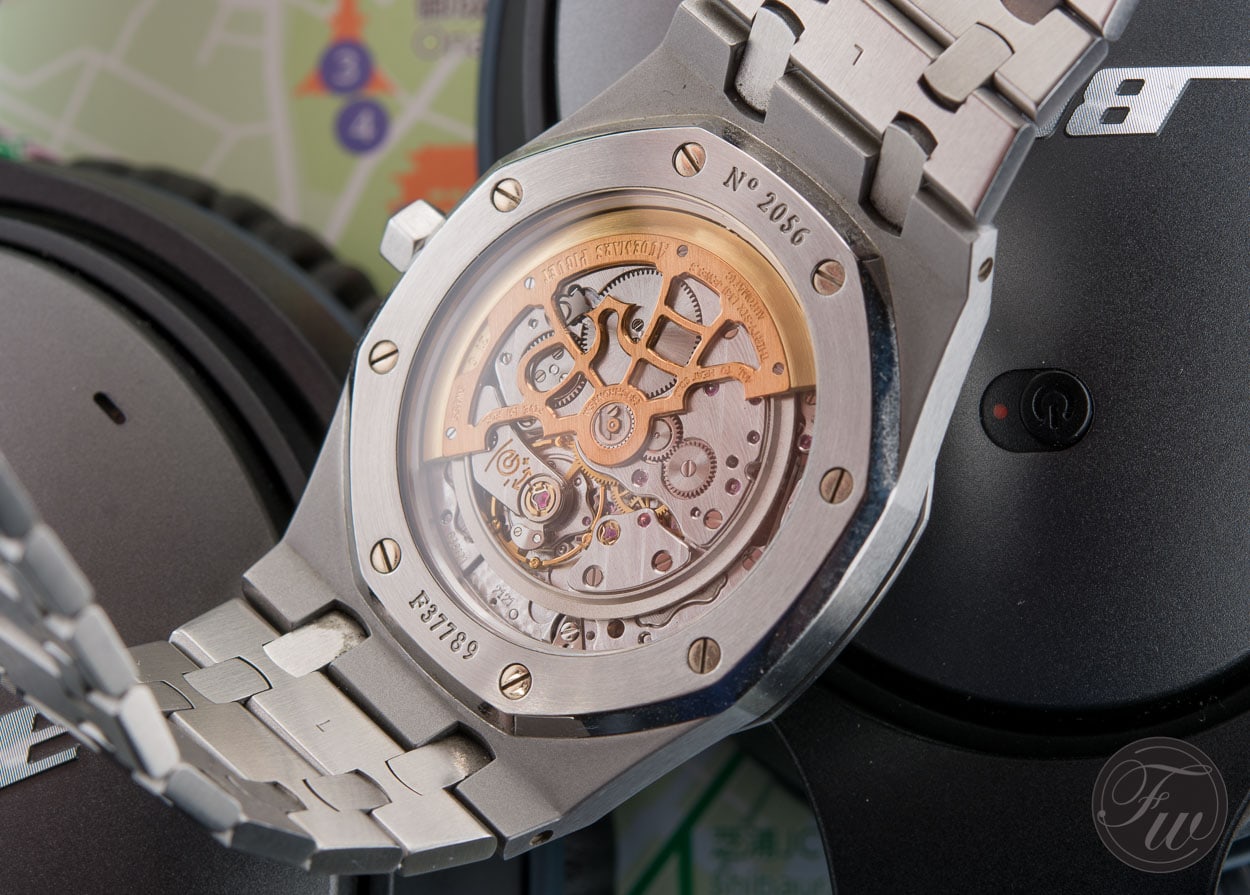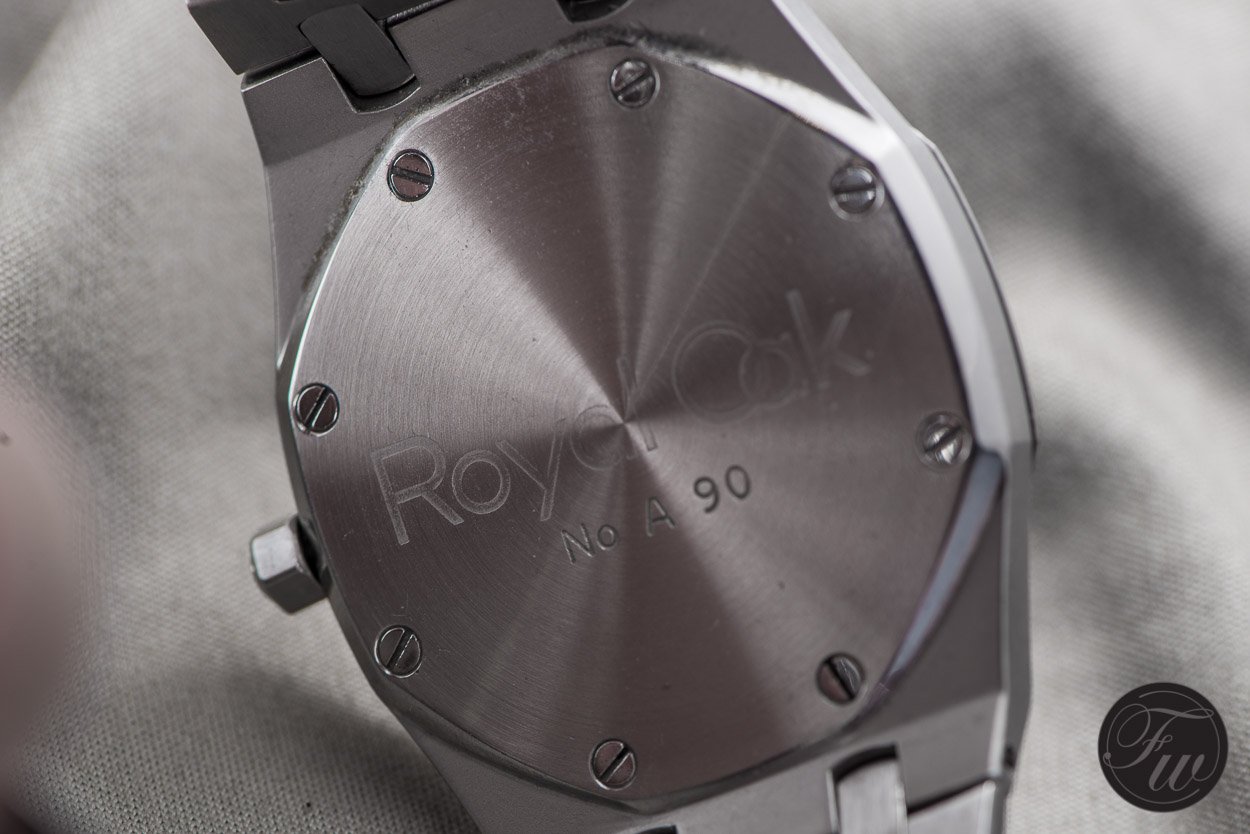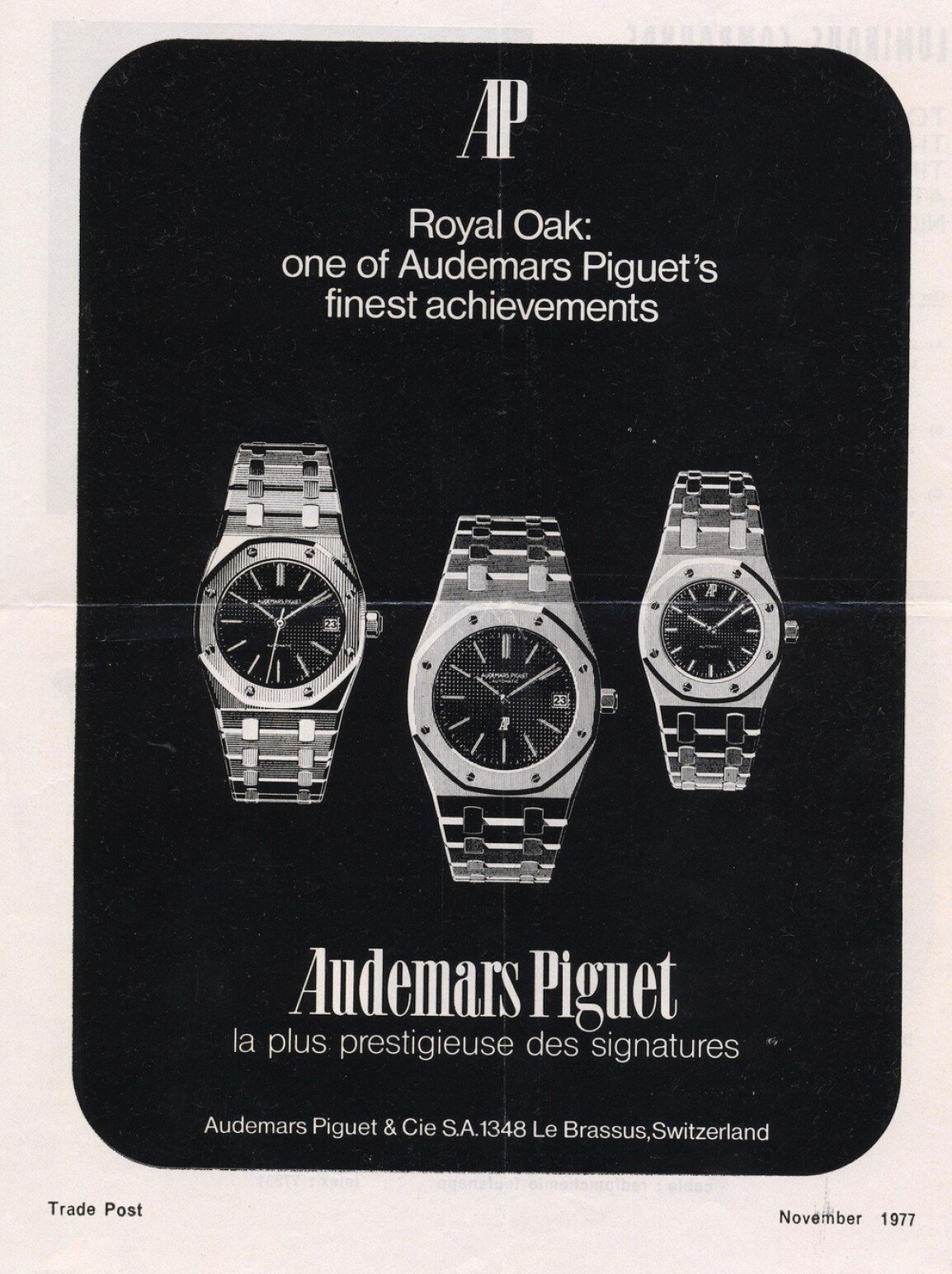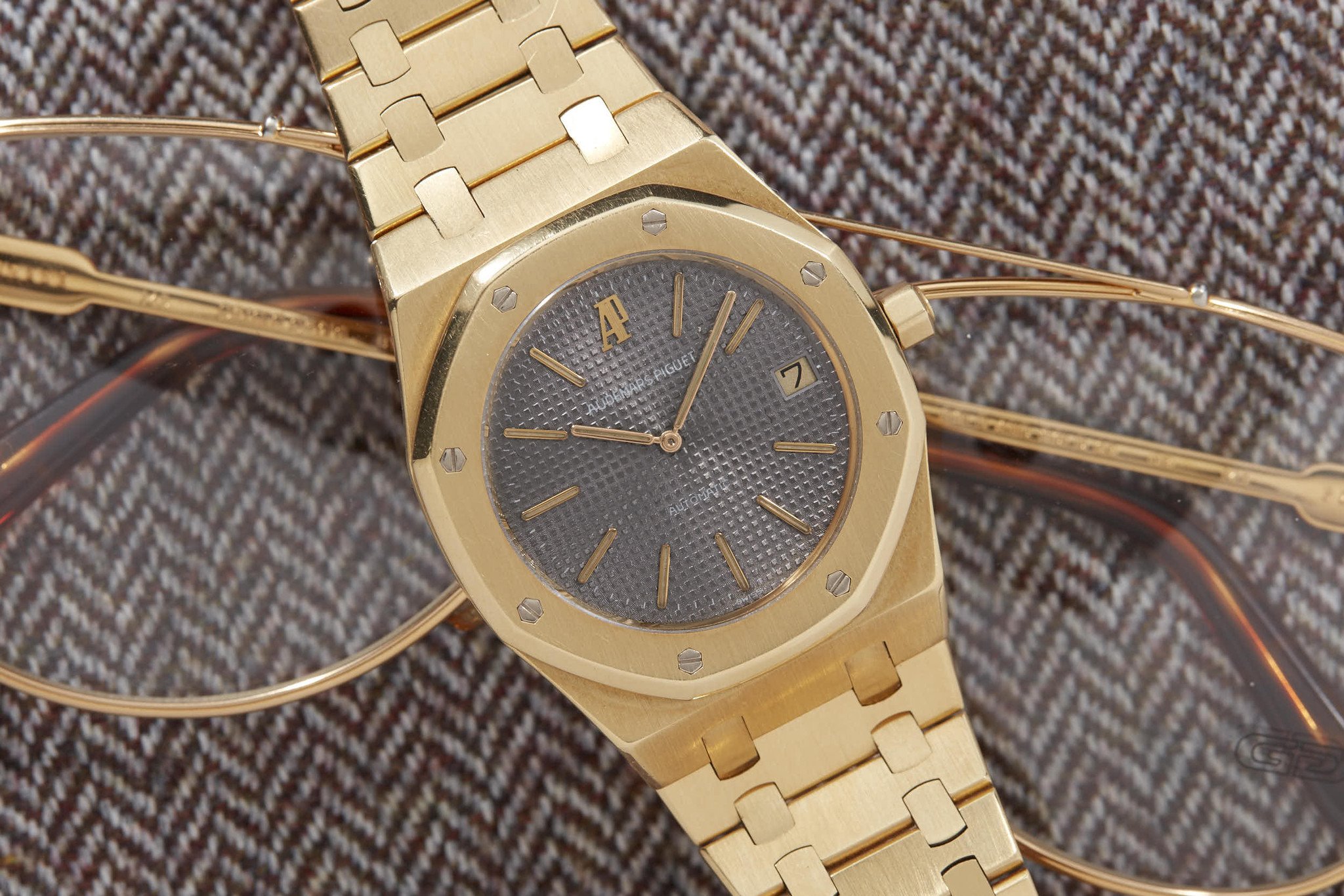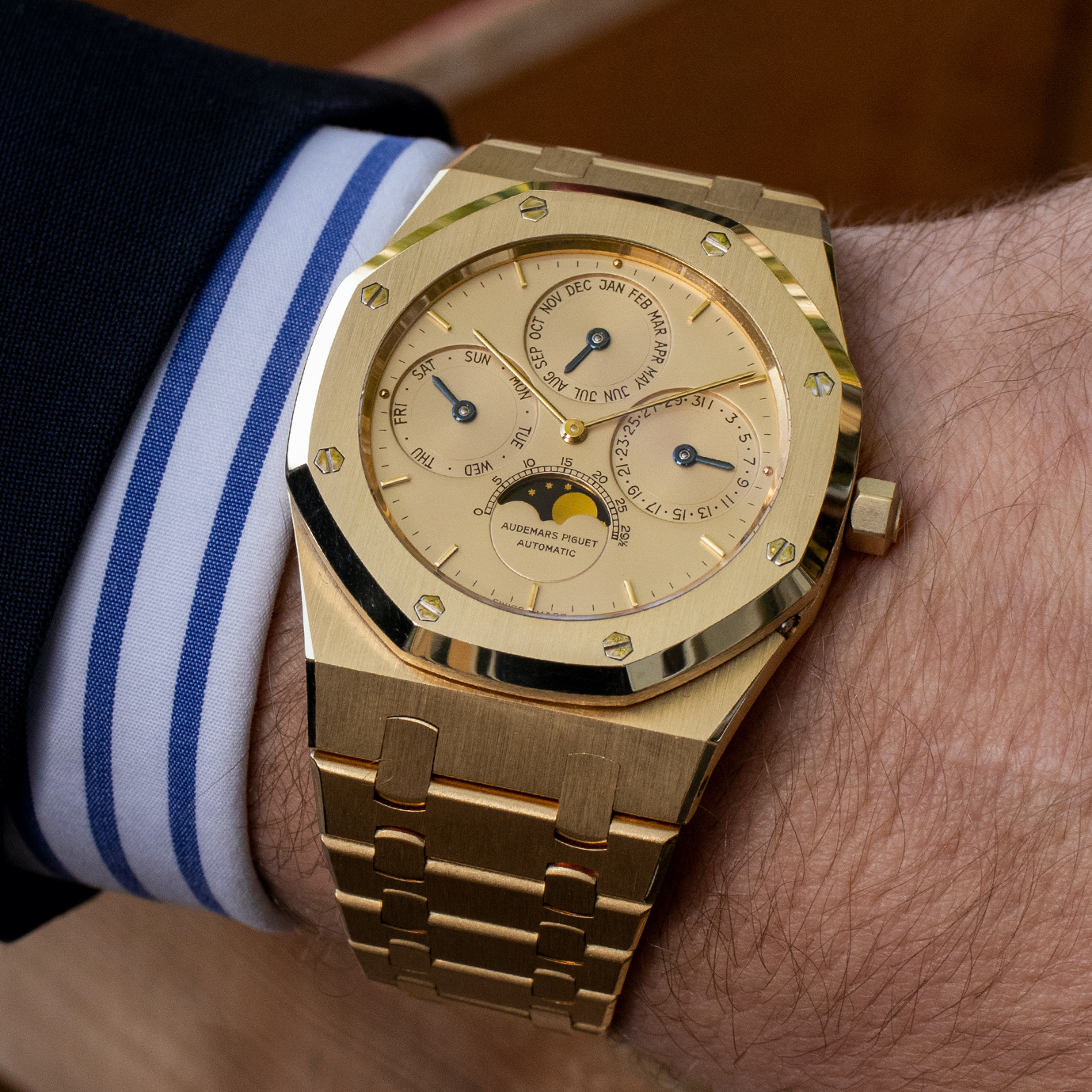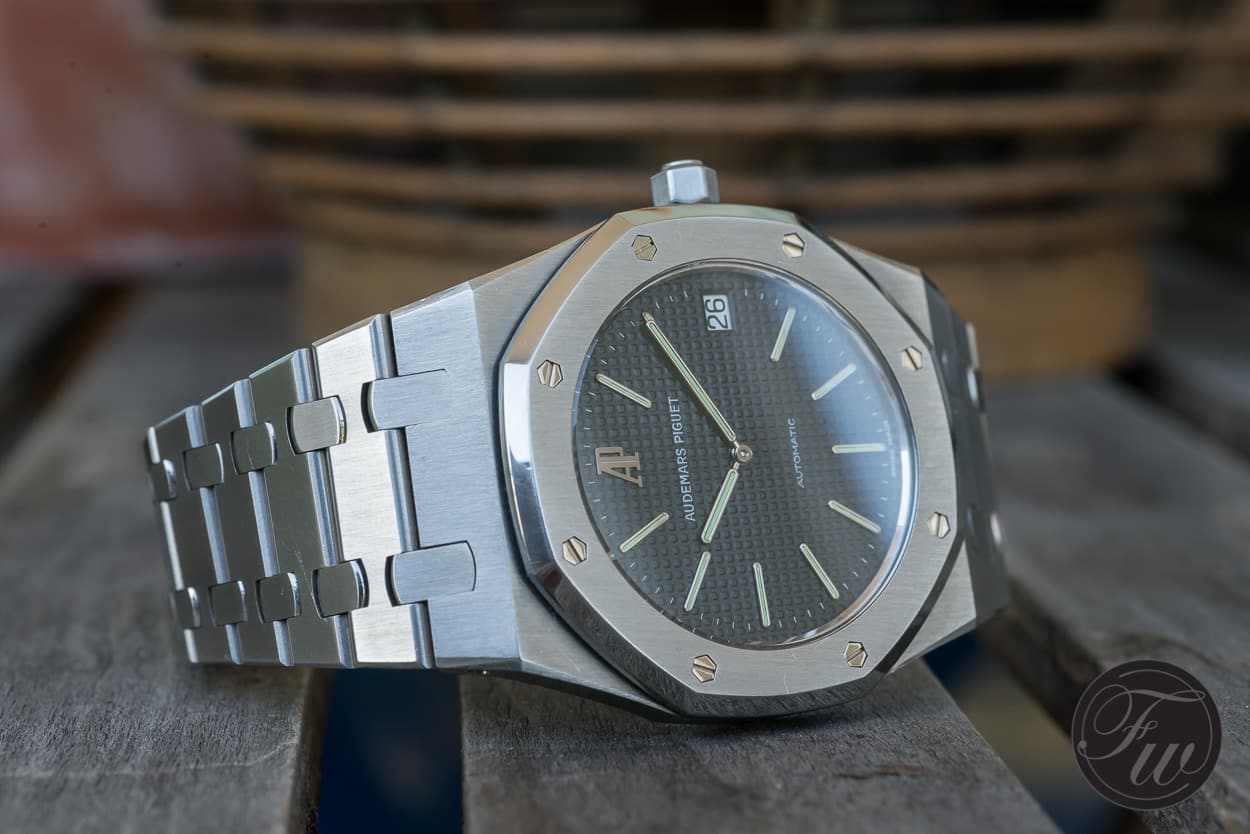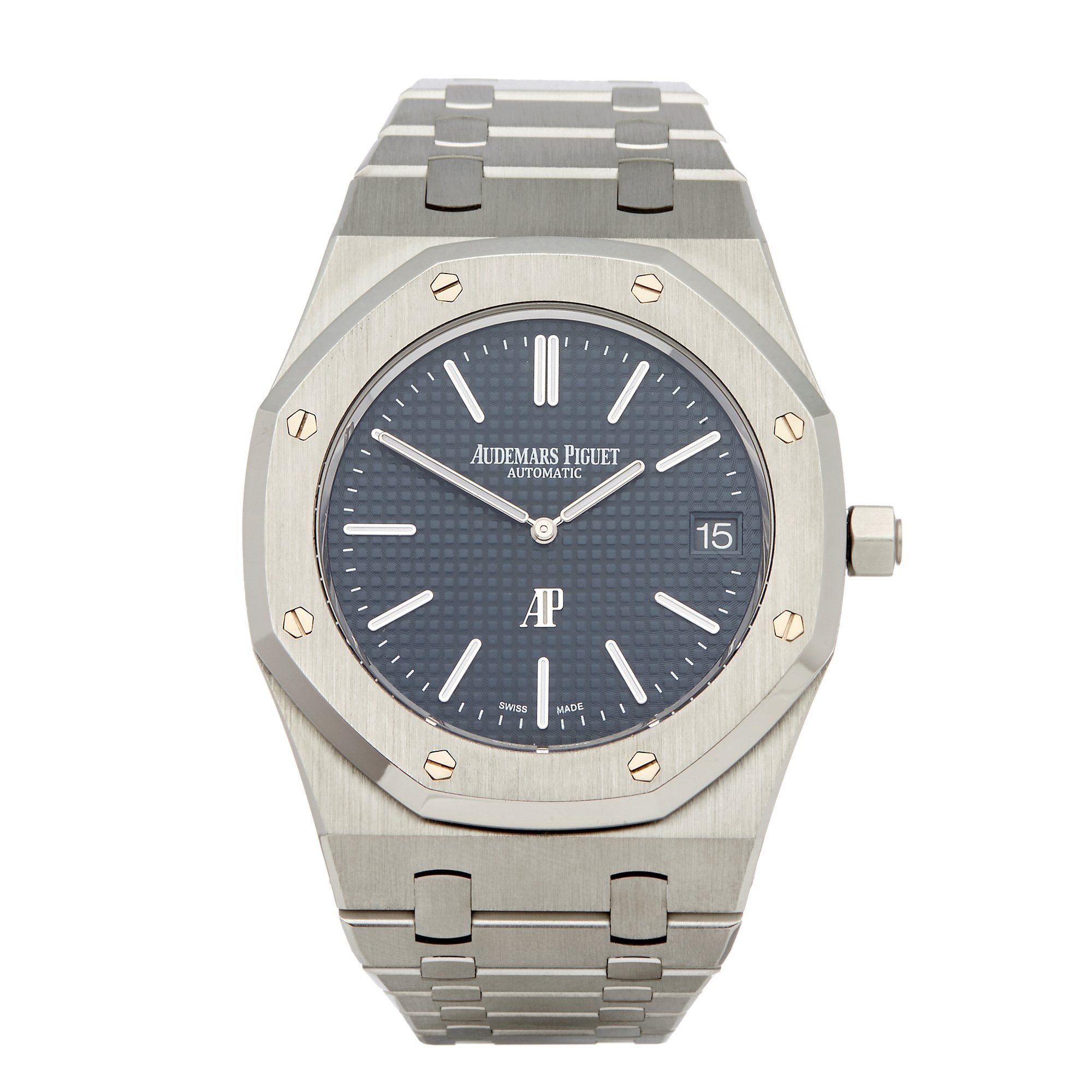Celebrating 50 Years Of The Royal Oak — The “Jumbo” Journey
The story of the Royal Oak didn’t start in 1972. Rather, it began two years before, right before the Basel watch exhibition of 1970. At the time Audemars Piguet produced about 6,000 watches per year. They were mainly small dress watches, some jewelry pieces, some extraordinary watches with complications, and of course, a lot of extra-thin watches. At the time, Audemars Piguet had around 70 employees.
But the future of the brand was about to change, and in ways that few back then would have probably thought possible. The Royal Oak would alter AP’s destiny forever, becoming an icon in the truest sense of the overused word. This year, the Royal Oak turns 50 years old, so I’d like to take you back through its illustrious history. I hope you enjoy this tribute to one of the all-time greats.
How the Royal Oak came to life
As strange as it may sound, the roots of the Audemars Piguet Royal Oak can be found in Italy. Italy was — and still is — at the forefront of fashion and trends. At the time, there was already a huge interest in sports watches. Italian watch distributor Carlo de Marchi wanted a versatile sports watch. It would need to be one that could be worn during board meetings, when sailing, when visiting a club, and even when going to a formal dinner. Georges Golay, general manager of Audemars Piguet at the time, received this request from De Marchi and a few others. Just before the Basel exhibition in 1970 opened its doors, he gave Gérald Genta a phone call. Until now, many believed it was in 1971, but Georges Golay explained in an early 1980s interview it was actually in 1970.
Genta, who was responsible for a number of 1950s and 1960s watch designs for Omega and Universal Geneve, for example, started his own company in 1969, instead of being on the payroll for just one brand. Golay explained to Genta what he needed for his Italian client, a design for a stylish — and water-resistant! — sports watch in stainless steel. And he needed the design by the very the next day.
An overnight design by Gérald Genta
Gérald Genta, with very limited time to pull off a new design for a big client, used the inspiration of a diving helmet he saw as a young kid. It was a diving helmet with eight bolts and a rubber gasket. Without the use of today’s computer-aided design technology, Genta designed an ultra-thin sports watch with an eight-sided bezel with eight hex bolts that mount to the stainless steel monobloc case. Attached to the case was an integrated bracelet that would play with the light, with a brushed finish and polished angles all around (not only the sides). The cobalt blue dial had a tapisserie motif and featured the AP monogram at 6 o’clock. That was first for Audemars Piguet.
It’s interesting to note that the watch did not have a name at this stage. So the story about the ship HMS Royal Oak — or the “Royal” oak tree where King Charles II hid in September 1651 to escape from the Roundheads after the Battle of Worcester — was not a topic at all at this point.
The Safari watch
The next day, the watch was presented by Golay to the distributors of the Italian and Swiss market, De Marchi and Beauty. Genta was not present during this presentation, but according to AP’s general manager, it was an instant hit with the distributors. So Gérald Genta sold his design to Audemars Piguet to please the (mainly) Italian market. The nameless watch then needed to be developed for the Basel exhibition in 1972. Internally, AP started to use the name “Safari” for this watch, as it conjured up images of adventure. You might know that a few decades later, this name did make a comeback to one of the Royal Oak Offshore models. But at the time, the Safari name was never used outside the premises of Audemars Piguet.
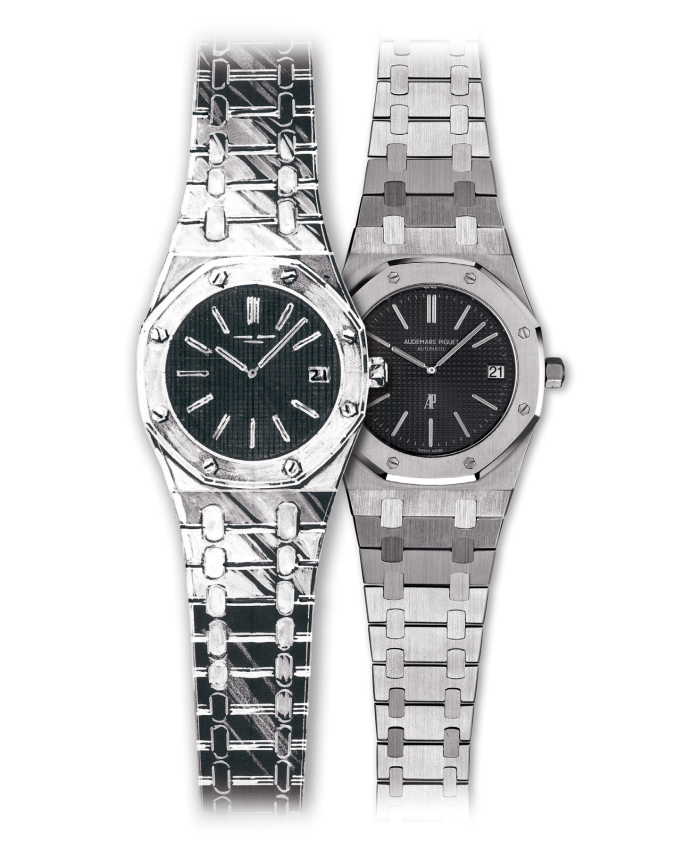
An image of Genta’s sketch and a 5402. Not the earliest version though, as “Swiss Made” only appeared on the dial later.
Prototypes in gold
Meanwhile, Audemars Piguet started to develop the watch, ordering prototype cases and bracelets from suppliers. For these, they used white gold, as it was cheaper to manufacture and process than stainless steel was at the time. There were other sports watches in steel, of course, but the way AP wanted the Royal Oak to be finished was new, and it was cheaper and easier to play “trial and error” with gold. However, the concept was to deliver this as a stainless steel watch to the market. The initial idea was to limit the production of this new stainless steel luxury sports watch to 1000 pieces. There would be 400 for Italy, 400 for Switzerland, and the remaining 200 for the rest of the world.
AP Caliber 2121
This Royal Oak was powered by an ultra-thin self-winding caliber 2121. This movement is an evolution of caliber 2120, originally designed by Audemars Piguet, Patek Philippe, and Jaeger-LeCoultre, and based on the latter’s caliber 920. This movement was already on the market in 1967, but JLC never produced this movement for its own use. It would only be for Audemars Piguet, Patek Philippe, and Vacheron Constantin. The holy trinity, so to speak. Later on, Audemars Piguet manufactured this movement in-house and still does today. In fact, all the “Jumbo” and later “Extra-Thin” models have been using this exact same caliber 2121.
The Audemars Piguet Royal Oak 5402 is here
During the Basel fair in 1972, Audemars Piguet introduced the Royal Oak with reference 5402. With a 39mm case diameter, the watch was large at the time, hence the “Jumbo” designation it received from the crowd. The “Jumbo” nickname was not an AP creation. This Royal Oak 5402 was as thin as a dress watch but as large as a sports watch. The name Royal Oak was an idea by the Italian distributor Carlo de Marchi.
The very first leaflets contained the battleship and King Charles’s story to explain the name Royal Oak to the customers. Today, we are used to the idea that a steel watch can be more expensive than a gold watch. IN 1972, however, this certainly wasn’t the case. Audemars Piguet priced its new “tryout” at CHF 3,300. It was an amount that would enable you to purchase a number of steel watches from other brands. For example, a Rolex Submariner at the time was priced at $230 in the US (approximately CHF 875 at the time).
A tough sell, or not?
It took Audemars Piguet a couple of years to sell 400 Royal Oak watches. At first, it was probably not the success that Golay, De Marchi, and Beauty had hoped for. The price might not have been the only reason though. At the time, most (Italian) men are still in favor of smaller watches. And 39mm was far from small in the early 1970s. Especially due to the shape and integrated bracelet design, the watch appeared even larger than 39mm. But, as always, it takes just a special moment or special wearer to change the popularity of a watch. Another point is that the slow start may have been the case in Italy. Remember, there were only a few pieces for the rest of the world. In 1973, however, Golay already indicated that the demand from Audemars Piguet’s customers had changed and that the Royal Oak was doing well.
Agnelli as an influencer
Then AP’s designer, Jacqueline Dimier, came up with some smaller versions of the Royal Oak in 1974. These included some gold models, and consequently, the demand for the Royal Oak went berserk, even in Italy. But there was more. In 1974, FIAT CEO and style icon Gianni Agnelli apparently wore the Royal Oak. Along with that of some other notable Royal Oak owners, Agnelli’s influence was a game-changer for this watch. From then on, AP produced more than the initial 1,000 Royal Oak reference 5402 watches. It also became available in gold and bi-color materials. At some point during the production of the Royal Oak 5402, the AP logo was relocated from 6 o’clock to 12 o’clock.
The Rise of the Royal Oaks
During the following nearly 50 years, the popularity of the Royal Oak only grew. Even during the quartz era, the Royal Oak was dominating the Audemars Piguet catalog, available in both mechanical and quartz versions. Ladies’ models were added, as well as smaller 36mm versions for men. At some point, the 36mm reference 14700 and 14790 watches were more popular than their 39mm big brother.
Also, in terms of materials, the Royal Oak became available in gold, bi-color, and later, in more exotic materials too. The Royal Oak became Audemars Piguet, and as we know now, it is tough — and in my opinion totally unnecessary — to change that image. In 1986, AP added a chronograph to the Royal Oak collection and other complications followed as well. In 1984, AP introduced the Royal Oak Perpetual Calendar, using the self-winding caliber 2120/2800. Caliber 2120 is the base movement, and 2800 is the add-on module with the calendar complication. It’s interesting to note that Audemars Piguet had already used a number of these complications, or movements, in non-Royal Oak watches before.
In 1990, Audemars Piguet stopped the production of the original Royal Oak reference 5402. But fans of the OG watch did not have to wait very long.
1992 — 20th Anniversary Royal Oak 14802 Jubilee
Two years later, in 1992, AP celebrated the 20th anniversary of the Royal Oak with a special Jubilee edition of the watch, reference 14802 (we covered it here). A specially decorated rotor marks the anniversary celebration, and only 1000 pieces were made.
There were 700 pieces in steel, 280 in gold, and 20 in platinum. A number of the Royal Oak ref. 14802 watches come with a salmon dial, which is extremely sought-after.
Royal Oak Offshore introduction
In 1993, Audemars Piguet introduces a new additional collection designed by Emmanuel Gueit for a younger audience — the Royal Oak Offshore. It was even bigger than the 39mm Royal Oak, with a diameter of 42mm and a height of approximately 15mm. According to designer Gueit in an interview, Gérald Genta was not amused by the introduction of the Offshore. We did an in-depth story on the Offshore “The Beast” 25th anniversary here. Just like the “Jumbo”, the nickname “The Beast” wasn’t given to the watch by AP, but by its clients and admirers.
We’re not sure if Genta always felt as unamused with the Offshore as he was upon introduction in 1993. For a long time, however, in the 2000s and 2010s, the Offshore was more popular than the regular Royal Oak models.
New “Jumbo” references
After AP discontinued the 5402 in 1990 and had its 14802 “Jubilee” piece in 1992, it decided to bring back the “Jumbo” with reference 15002ST. It was a very short-lived reference from 1996 to 1997 and was succeeded by the Royal Oak 15202ST around 1999. This Royal Oak 15202 was available in two dial colors, with both charcoal and white dials (we covered the 15202 here). The 15202 was also available in gold. The AP caliber 2121 is visible through the sapphire crystal on the backside, just like it was on the 1992 Jubilee version. The monobloc case remained as well, unlike with Patek’s Nautilus or the other Royal Oak references.
Unpopular for a while
It was in these years that I developed my interest and love for mechanical watches, and the Royal Oak was something I simply adored. I felt alone in this journey though, as not many people shared the same thoughts and appreciation for this watch. The majority still thought it was an overly expensive watch that offered basically no complications (not even a second’s hand). My collecting friends were rather interested in the RO Offshore in those days.
AP starting a new era with the Royal Oak 15300
In 2002, Audemars Piguet introduced a new in-house developed movement, caliber 3120. In 2005, the Royal Oak (Date) debuted, and it was the first to use the 3120 movement. Just like the Royal Oak “Jumbo” 15202, the Royal Oak 15300 had a 39mm case. But with a height of 9.4mm, it was nearly 2mm thicker than the original Royal Oak. The same applied to the bracelet, which was also much thicker than the one on the 15202 and its predecessors. After the 15300, Audemars Piguet introduced a larger version in 41mm, the 15400. Since then, new variations of the steel Royal Oak with a seconds hand have been added. In the past, I purchased a 15300, a 15202, and later, a 26300 (Chronograph). The 15202, however, was simply unparalleled.
In those years, the demand for the classic stainless steel Royal Oak was low, and it was rumored that only a few Royal Oak 15202 references were produced each year. The high demand was for the RO Offshore collection, a sportier collection aimed at a younger audience. The Offshore Diver was introduced, as well as even larger and more spectacular Offshore models.
2012 — 40th Anniversary of the Royal Oak
That changed in 2012 when Audemars Piguet celebrated the 40th anniversary of the Royal Oak. The 15202 received a long-due update. While retaining the iconic 2121 movement, the dial changed to something more like those first dials of the early 5402 references, and the logo moved back to the 6 o’clock position. The bracelet also received an update, and it became a little thicker with a double-folding clasp instead of a single-folding one. The reference number 15202 remained, but Audemars Piguet started to refer to this model as “Extra-Thin”. The “Jumbo” designation didn’t make much sense anymore in an era of larger and even oversized watches. The introduction price of the new 15202 was €17,900 at the time.
Royal Oak 15202 on the rise (again)
I almost can’t believe that a decade has passed since the introduction of the 15202 “Extra-Thin”. In this last decade, the demand for the Royal Oak has skyrocketed. Not only did the retail price go up quite steeply in the last 10 years, but the market prices are also simply beyond imagination. The demand for the Royal Oak is far higher than Audemars Piguet is able to supply with its production of around 40,000 watches per year in total. In these last few years, the Royal Oak 15202 has reached rockstar status, given the six-digit prices some stainless steel versions command.
2022 — New beginnings for the Royal Oak Jumbo?
Whether the watch has that value is up to you, the buyer. From my own experience, I find that the 15202 has been undervalued for a very long time, even though the price was never low. The design, the finishing of the case and bracelet, the hand-finished movement, and the comfort on the wrist all classify the AP Royal Oak 15202 as a piece of Haute Horlogerie. I’ve tried many RO Offshore models, as well as many of the regular Royal Oaks, but the comfort of the 15202 is unmatched.
Audemars Piguet has announced the discontinuation of the 15202 “Extra-Thin” as of 2022. Le Roi est mort, vive le roi! I am sure Audemars Piguet will come up with a fitting replacement for the future, and that might be sooner than later.
Find out more information about Audemars Piguet on the brand’s official website.



